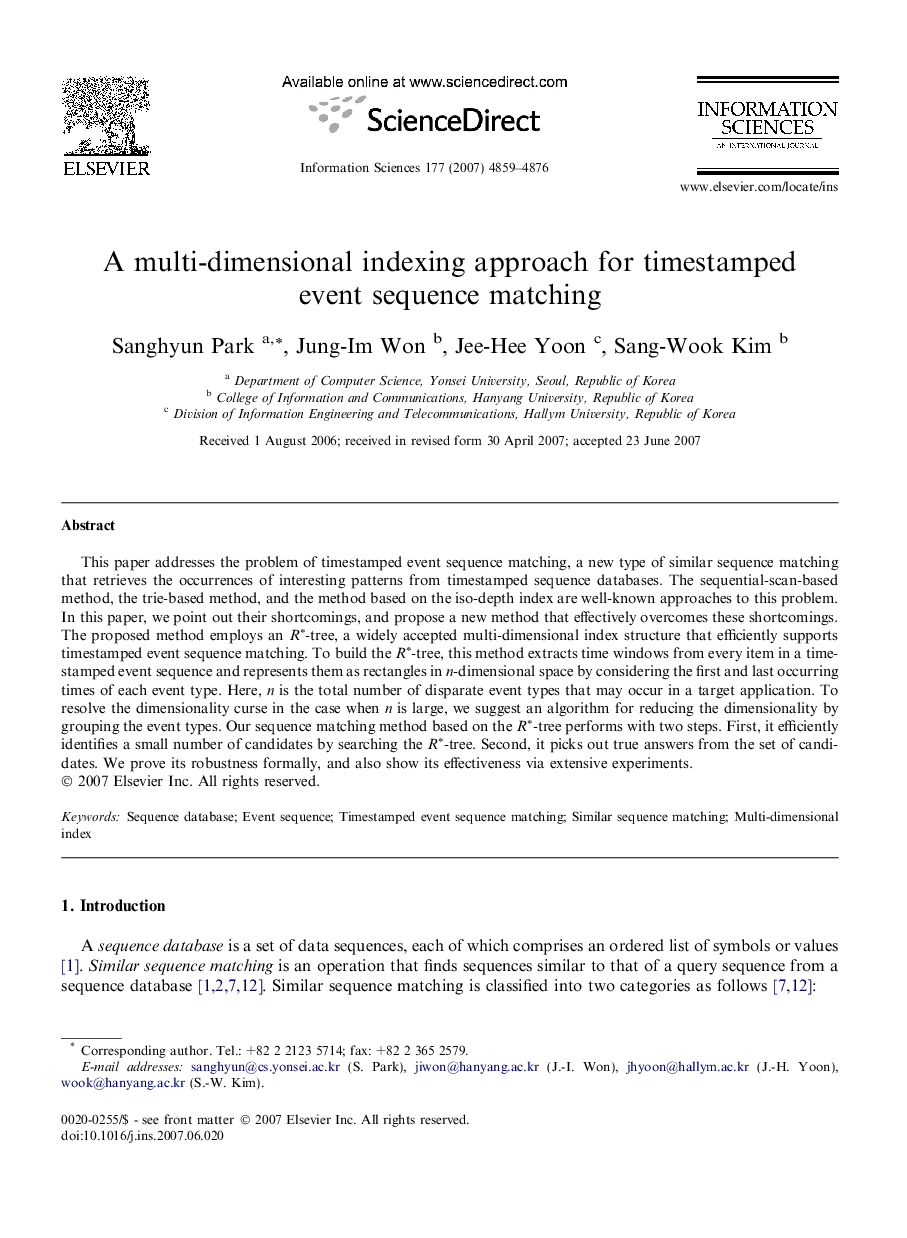| Article ID | Journal | Published Year | Pages | File Type |
|---|---|---|---|---|
| 396098 | Information Sciences | 2007 | 18 Pages |
This paper addresses the problem of timestamped event sequence matching, a new type of similar sequence matching that retrieves the occurrences of interesting patterns from timestamped sequence databases. The sequential-scan-based method, the trie-based method, and the method based on the iso-depth index are well-known approaches to this problem. In this paper, we point out their shortcomings, and propose a new method that effectively overcomes these shortcomings. The proposed method employs an R∗-tree, a widely accepted multi-dimensional index structure that efficiently supports timestamped event sequence matching. To build the R∗-tree, this method extracts time windows from every item in a timestamped event sequence and represents them as rectangles in n-dimensional space by considering the first and last occurring times of each event type. Here, n is the total number of disparate event types that may occur in a target application. To resolve the dimensionality curse in the case when n is large, we suggest an algorithm for reducing the dimensionality by grouping the event types. Our sequence matching method based on the R∗-tree performs with two steps. First, it efficiently identifies a small number of candidates by searching the R∗-tree. Second, it picks out true answers from the set of candidates. We prove its robustness formally, and also show its effectiveness via extensive experiments.
